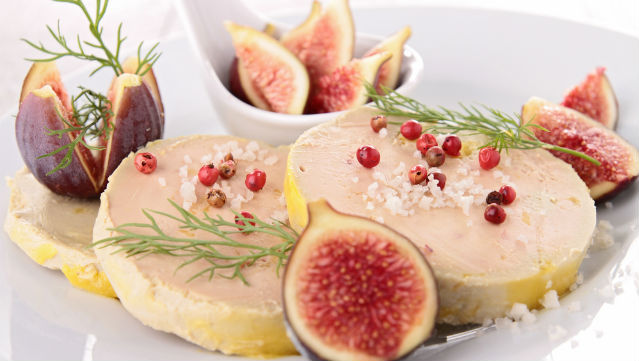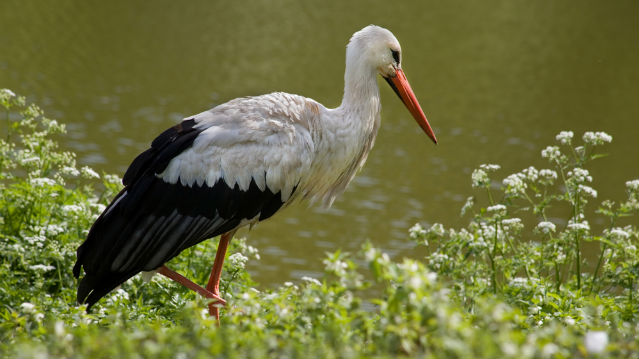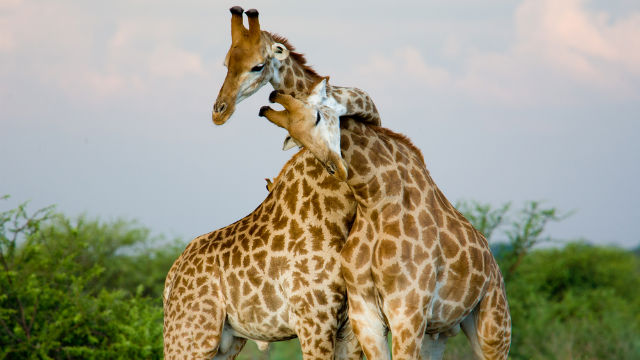SUMMARY
This is AI generated summarization, which may have errors. For context, always refer to the full article.
MANILA, Philippines – Here are Life & Style stories from the week of August 25 to 31.
US court upholds California foie gras ban

A US federal appeals court upheld California’s ban on the sale of foie gras Friday, August 30 – 13 months after the block on the controversial delicacy came into force.
The 9th Circuit Court of Appeals rejected claims that the ban interferes with free trade, made in a lawsuit filed in Los Angeles by a group of Canadian and US foie gras producers.
California lawmakers agreed with the ban in 2004, but gave the western US state’s only foie gras producer 7 and a half years to comply before it came into effect on July 1 last year.
Restaurants serving the gourmet item – made by force-feeding ducks or geese, a practice some animal-rights campaigners have denounced as cruel – can be fined up to $1,000.
The 27-page opinion of a 3-judge panel, issued Friday, includes a detailed description of how foie gras is produced, by force-feeding ducks so they store extra fat in their livers.
The producers who brought the lawsuit, including New York state-based Hudson Valley Foie Gras, the biggest US supplier of the delicacy, are expected to appeal Friday’s ruling again.
In the runup to the July 1, 2012 ban, some of the Golden State’s top chefs, calling themselves the Coalition for Humane and Ethical Farming Standards (CHEFS), redoubled efforts to persuade lawmakers to overturn the ban.
They staged a series of foie gras-rich evenings to raise money for the cause. But John Burton, the former lawmaker who drafted the legislation, likened foie gras production to outlawed practices such as waterboarding or female genital mutilation.
“I’d like to sit all 100 of them down and have duck and goose fat – better yet, dry oatmeal – shoved down their throats over and over and over again,” he told the San Francisco Chronicle.
Landlocked Paris: Home of Eiffel Tower, Louvre and…seagulls

A two-hour drive from the French coast, Paris sets up an artificial seashore on the banks of the Seine each summer and while the beach may be fake, the seagulls overhead turn out to be real.
And the birds don’t leave when the stretches of sand and deckchairs are removed ahead of the autumn chill.
Natives of the Atlantic coast, these herring gulls – with their white head and body, grey wings, yellow beak, and ear-piercing shriek – have found a surprising new home in the City of Lights.
“You can’t really call it a population explosion,” according to Frederic Malher, deputy head of the city’s ornithological center, who said there are about 50 breeding pairs now in central Paris.
But attracted by warmer temperatures and ready food, they offer an incongruous – and not always welcome – presence on the tall Haussmannian buildings where their nests are perched and which Malher said the gulls probably mistake for seaside cliffs.
Easy pickings
For more than a century, Paris has been a part-time home for the much smaller black-headed gull (Larus ridibundus) – a river bird that overwinters in city parks before heading home to eastern Europe each March.
But the herring gull (Larus argentatus) is now a year-round resident and even nests here, said Malher.
Concentrations of the birds are today found in the historic central Marais district, around the national archives and in a neighborhood near the Montparnasse skyscraper on the Left Bank.
In 1989, a captive female at the Jardin des Plantes botanical garden and a wild male were one of the first pairs to hatch eggs in Paris.
The Paris herring gulls today have between one and 3 offspring per pair per season, but a very high death rate explains why the population is only growing slowly.
The herring gull is big – an adult has a wingspan of 1.5 meters (4.9 feet).
Its original diet included fish and shellfish, even small birds, but in town the gull feeds on “pretty much anything,” according to Malher.
Peter Rock, an ornithologist and urban gull expert in Bristol, England, said herring gulls are moving to cities attracted by easy pickings offered by rubbish tips, an absence of predators and warmer temperatures.
“In town, the temperature is between 4 and 6 degrees C (7.2 and 10.8 degrees F) warmer than the surrounding countryside. It makes things quite a lot easier for the breeding season,” he explained.
Trash cans
As in Britain, the birds abound in French coastal towns like Dieppe, Lorient, or Brest, where hungry seagull flocks pester restaurant terraces.
Experts say herring gulls pose no real threat but cause much annoyance with their cries and tearing up of trash cans.
The gulls cause damage to buildings – when posturing to avoid a fight they have the habit in the wild of pulling out big clumps of grass, but in the city it is roofing felt, pipe insulation and waterproofing materials that fall victim.
Paris city hall says it has so far received only a handful of complaints, mainly from residents irked by the noise.
Herring gulls have a high-decibel cry, “Iyo iyo iyo GA-GA-GA-GA-GA,” which they tend to utter in a group, especially at sunrise – something that is not popular in a city where quiet and sleep are prized.
“When you hear it, you think that the racket is being made by 3 or 4 birds and it turns out that just one bird is doing it,” said Malher.
Rock, whose city has a big population of herring gulls, agrees.
“The major complaint is from the noise. It goes on all day and all night with a particularly loud response to the dawn,” he said.
“I suppose the second-most complained-about thing is the white stuff that comes out of their rear end.”
Herring gulls are a protected species in France, as in Britain, and it is an offense to kill the bird.
But authorities in some cities where they have become a pest can obtain special permission to sterilize eggs in the nest by covering them with varnish to suffocate the embryo.
More fresh fruit deters diabetes; juice boosts risk

Eating more whole fresh fruit, especially blueberries, grapes, apples and pears, is linked to a lower risk of type 2 diabetes, but drinking more fruit juice has the opposite effect, says a study.
British, US, and Singaporean researchers pored over data from 3 big health investigations that took place in the United States, spanning a quarter of a century in all.
More than 187,000 nurses and other professional caregivers were enrolled.
Their health was monitored over the following years, and they regularly answered questionnaires on their eating habits, weight, smoking, physical activity, and other pointers to lifestyle.
Around 6.5 percent of the volunteers developed diabetes during the studies.
People who ate at least two servings each week of certain whole fruits, especially blueberries, grapes, and apples, reduced their risk of Type 2 diabetes by as much as 23 percent compared to those who ate less than one serving per month.
“Our findings provide novel evidence suggesting certain fruits may be especially beneficial for lower diabetes risk,” said Qi Sun, an assistant professor of nutrition at the Harvard School of Public Health.
On the other hand, those who consumed one or more servings of fruit juice each day saw their risk of the disease increase by as much as 21 percent.
Swapping 3 servings of juice per week for whole fruits resulted in a 7-percent reduction in risk, although there was no such difference with strawberries and cantaloupe melon.
Solids and liquids
The paper, published on Friday by the British Medical Journal, says further work is needed to to explore this “significant” difference.
It speculates that, even if the nutritional values of whole fruit and fruit juice are similar, the difference lies with the fact that one food is a semi-solid and the other a liquid.
“Fluids pass through the stomach to the intestine more rapidly than solids even if nutritional content is similar,” says the paper.
“For example, fruit juices lead to more rapid and larger changes in serum [blood] levels of glucose and insulin than whole fruits.”
The study also points to evidence that some kinds of fruit have a beneficial effect for health.
Berries and grapes, for instance, have compounds called anthocyanins which have been found to lower the risk of heart attacks.
But, say the authors, how or even whether this also applies to diabetes risk is for now unclear.
The investigation looked at data from the Nurses’ Health Study, which ran from 1984-2008; the Nurses’ Health Study II (1991-2009); and the Health Professionals Follow-Up Study (1986-2008).
10 kinds of fruit were used in the questionnaire: grapes or raisins; peach, plums or apricots; prunes; bananas; cantaloupe melon; apples or pears; oranges; grapefruit; strawberries; and blueberries.
The fruit juices identified in the questionnaire were apple, orange, grapefruit, and “other.”
In Poland, a stork is a man’s best friend

It is a success story of happy coexistence: outnumbered by storks, residents of the Polish hamlet of Zywkowo welcomed the birds on their roofs in exchange for good luck and, if you believe legend, newborns.
Kept afloat by EU and non-profit funding, the northern hamlet – a stone’s throw from the Russian exclave of Kaliningrad – depends on storks for the tourism it needs to survive.
“In the 1960s, we had 120 residents and 20 storks. Today it is the opposite,” says retired farmer Wladyslaw Andrejew.
While too poor to keep the younger generation from leaving, this part of the country is paradise on earth for the large, red-legged birds.
Animal pals
More than 15,000 White Stork couples flock to the lake-rich northern region of Masuria every summer, according to local officials.
Poland as a whole sees an average of 50,000 storks a year, or 20 percent of the world’s population.
Since he was little, 64-year-old Andrejew has been passionate about storks, building and fixing massive nests for his animal pals on roofs, in trees, and on poles around the farm.
He has counted them, gawked at them, fed them, and protected them. In 2004, a record year, he counted 27 stork couples on his farm, plus 38 babies.
“Storks are like nature in general: you have to put your heart into it. Then they’ll bring good luck,” he says.
“We’ve always lived under the protective wing of the stork and have never known misery.”
Every April he impatiently awaits the sound of the storks’ noisy bill-clattering – akin to machine gun fire – as they fly in from Africa.
“In winter, when the storks are gone, the silence is awful,” Andrejew says.
“Come spring, the back of our necks wrinkle as we lift our heads toward the sky to scan for the first arrivals. In autumn, we cry to see them go.”
Setting up camp
When he retired, Andrejew sold his farm to the bird protection society PTOP, a non-profit organization based in the northeastern city of Bialystok.
Using the farm as a local base has allowed PTOP to launch a series of projects aimed at welcoming storks into the area.
“We harvest hay, dig ponds, put up new platforms for their nests, fix the old platforms, insulate the electric lines for the birds’ safety,” says farm manager Adam Lopuszynski.
“We bought these aerial lifts firemen use, which help us reach and repair the big nests up high.”
A stork’s nest generally weighs around 500 kilogrammes (1,100 pounds) but can reach up to quadruple that, or two tonnes.
PTOP acquired a total of 75 hectares (185 acres) of land around Zywkowo and planted a mishmash of crops as that’s what the bird prefers.
“Storks set up camp wherever there’s a mosaic of plots of land,” Lopuszynski says.
“We want to show that if we take care of nature, we can live side by side with the stork,” adds the former sociologist turned bird-watcher.
‘All for the bird’
Zywkowo’s three-year stork protection programme, which was cofunded by the European Union and ends this year, cost around 1.5 million euros ($2 million), according to PTOP official Sebastian Menderski.
“We do everything with the stork in mind. It’s all for the bird,” he says.
“The area’s future depends on the stork. If all the young people leave, our hamlet will disappear,” adds mayor Stefan Hryszko.
“Thanks to the stork, there’s investment, there are jobs, and there’s construction. That will keep us around.”
Plus, “it’s the storks who bring newborns!” jokes Andrejew, father of 5, citing an ancient legend still used in advertising, storybooks and popular imagery today.
“Some even say it’s enough for a woman to look at a stork to get pregnant.”
Zoos rethink role as matchmaker for endangered species

Like online dating sites for endangered species, many zoos use computerized matchmaking to mate animals in captivity in the hope of saving some of the world’s most vulnerable creatures.
The tools of the trade range from frozen panda sperm to genetic databases to ultrasounds for hefty rhinoceroses.
But like dating everywhere, it gets expensive, complicated, and doesn’t always work.
After more than 3 decades of efforts, some experts take a fresh look at modern-day breeding tactics. Zoos, they say, cannot keep pace with the high costs of shipping animals from one facility to another, as the loss of wild habitat pushes more and more creatures to the brink of extinction.
Sea change in zoos
A movement to improve captive breeding began in the late 1970s when scientists realized that some zoo-held baby giraffes, gazelles, and deer were more likely to die if inbred.
“That really caused a sea change in zoos because they realized they had to be better at managing captive populations,” recalled David Wildt, head of the Center for Species Survival at the Smithsonian National Zoo.
Today, survival plans exist for more than 500 species, including cheetahs, Asian elephants, and black-footed ferrets.
The genetic data of captive specimens is fed into computers so scientists can determine the most diverse matches for each individual.
Sometimes the plans work, as for the scimitar-horned oryx, a graceful type of African antelope that was declared extinct in the wild in 2000 due to overhunting and habitat loss.
Thousands have been bred in captivity. Some have already been reintroduced in Tunisia and there are plans to release more soon, according to the Sahara Conservation Fund.
Pandas
China’s giant panda breeding program has also been “extraordinarily successful,” said Wildt.
Beijing maintains a core population of captive pandas and rents some out to mate in zoos around the world, with the caveat that the animals must eventually be returned home.
“They only have one shot per year,” said Pierre Comizzoli, a research scientist who works with the solitary bears at the National Zoo in Washington.
The 220-250 pound (100-114 kilogram) pandas rarely manage the position needed to conceive naturally so zoo experts resort to artificial insemination.
“We have to anesthetize the male and then stimulate it under anesthesia, and that is the way that we get the semen,” Comizzoli explained. Then, they have to wait the entire 3 to 5 month gestation period to see if the female was even impregnated.
Most years, the attempts have failed. One panda cub born in 2005 at the National Zoo has survived to adulthood. This year, experts for the first time used samples from two different bears, including one from a San Diego zoo.
A so-far healthy, baby giant panda was born on August 23, though its paternity will remain a mystery until the DNA tests come back. A second cub emerged stillborn a day later.
Rhinos
For other species, like the critically endangered Sumatran rhinoceros, inbreeding is now the only option left, US zookeepers say.
In the wild, as few as 100 remain in Indonesia and Malaysia. The females ovulate only if a potential mate is nearby – which isn’t always the case.
A Cincinnati Zoo team began working with Sumatran rhinos in the 1990s and finally succeeded in getting a pair to breed in 2001, producing the world’s first calf born in captivity in 112 years.
Now, that zoo’s sole female, Suci, is sexually mature. Her only potential mate in captivity in the United States is her brother, Harapan.
An attempt to mate the siblings is expected to begin soon.
“We are in a really tough spot and we just don’t have any other options,” said Terri Roth, vice president of conservation and science. “Unless Indonesia were to capture more animals…we don’t have the genetic diversity that we need.”
Roth said she and her fellow scientists have spent more than 30 years trying to protect the wild rhino population and to improve their captive breeding program but said both efforts “haven’t succeeded as we hoped.”
Cost is a key obstacle. Maintaining a pair of Sumatran rhinos in Cincinnati ran up to $263,000 in 2011, she said. But the larger problem is the rapid loss of animals in the wild due to deforestation and poaching.
Computer match-up
Costs are high for breeding small animals, too. Wildt said his facility spent a quarter of a million dollars in a single year to breed 40 black-footed ferrets.
Chemistry can also be an obstacle. Sometimes animals, especially cheetahs and other big cats, just don’t agree with the computer match-up.
“Cats are extremely tricky to breed in captivity,” Comizzoli told AFP. “If they don’t like each other they are going to kill each other.”
For Wildt, the future lies in maintaining herds of animals in large, fenced-in spaces, like the 3,200 acres (1,300 hectares) he oversees at the Smithsonian’s facility in rural Virginia.
Growing up in groups, away from humans will help them to be released later. It may also help reintroduce some choice in the mating process and lead to better quality offspring, he said.
“There is a lot of discussion going on in the zoo community in North America and I think also in Europe about the fact that genetic management programs that have been in place now for over 30 years are not achieving their goals,” said Wildt.
Even when zoos manage to maintain 90 percent genetic diversity, “there are very few examples of successful reintroduction in the wild,” he added.
“This is the new reality,” he said. “There is going to have to be some sort of management of any kind of wildlife if we want to make sure they are going to be around for a long time.” – with reports by Agence France-Presse/Rappler.com
Foie gras image, photo of seagulls in Paris, fruit juice photo, stork image, and photo of giraffes – all from Shutterstock.
Add a comment
How does this make you feel?
There are no comments yet. Add your comment to start the conversation.